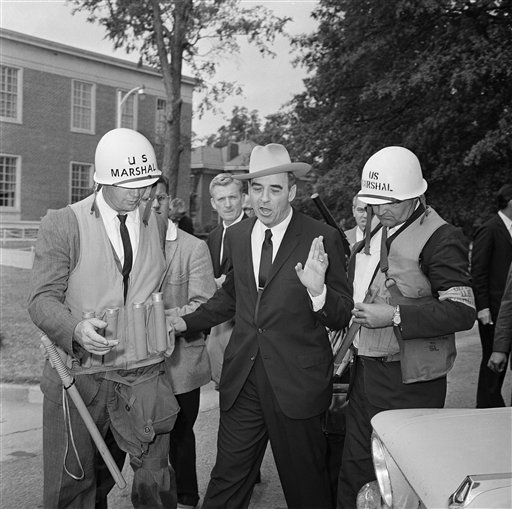In libel cases, plaintiffs who are public figures or officials have to meet a more stringent standard (actual malice) than do private citizens (negligence) if they are to collect damages. Thus, the status of a defamation plaintiff often affects the outcome of cases, as the courts balance the right of free press against an individual’s reputation.
Public figures and officials must show actual malice
When it comes to printed defamation (libel), courts have ruled that public figures, including government officials, have the burden of proving that defendants libeled them with actual malice.
In New York Times Co. v. Sullivan (1964), a case involving an Alabama official’s attempt to collect for false statements published in a 1960 civil rights advertisement, the Supreme Court reversed the libel award because the plaintiff had not established that “actual malice” motivated the inaccurate descriptions.
With this standard, a public official must show that the defendant made a libelous statement with “knowledge that it was false or with reckless disregard of whether it was false or not.”
Public officials not just those in elected positions
In Rosenblatt v. Baer (1966), the court elaborated that public officials include not just those in elected positions, but also people who work for elected officers. The court extended the actual malice rule of Times v. Sullivan to public figures in Curtis Publishing Co. v. Butts (1967) and Associated Press v. Walker (1967).
In Gertz v. Robert Welch, Inc. (1974), the court ruled that a prominent attorney was not a public figure. In its decision, however, the court described two kinds of public figure, both subject to satisfying the actual malice standard. Some public figures are people who have achieved “pervasive fame or notoriety” in all contexts. Along with these “all-purpose public figures,” the court explained, there are also “limited-purpose public figures,” people who have voluntarily engaged in a public controversy in an attempt to affect the outcome
Courts give greater protection to people who have not put themselves in public eye
Although the court made some rulings — notably Time, Inc. v. Hill (1967) and Rosenbloom v. Metromedia, Inc. (1971) — that did not protect private citizens from libel if the facts published were deemed newsworthy or of public interest, in the 1974 Gertz decision and in Time, Inc. v. Firestone (1976), it provided greater protection for individuals who had not voluntarily placed themselves in the public eye.
Unlike public figures, private individuals do not have to prove actual malice to win damages for libel.
More recently, “involuntary public figure” status has developed in lower court decisions, such as Dameron v. Washington Magazine (1985), which refers to someone involved in an event of overriding societal importance (in this case, an air traffic controller at the time of a major plane crash). Overall, though, private citizens have more protection from libel than do public figures and public officials.
This article was originally published in 2009. Gary E. Bugh is Professor of Political Science, Chair of the Political Science Department, and University Pre-Law Advisor at Texas A&M University-Texarkana. He teaches Political Theory, American Political Theory, Constitutional Law, Civil Rights and Civil Liberties, Political Parties and Elections, and the Presidency. His publications include Electoral College Reform: Challenges and Possibilities (Routledge, 2016).

